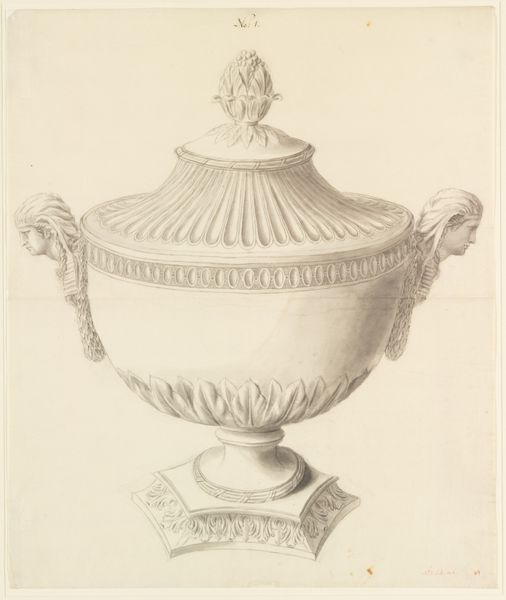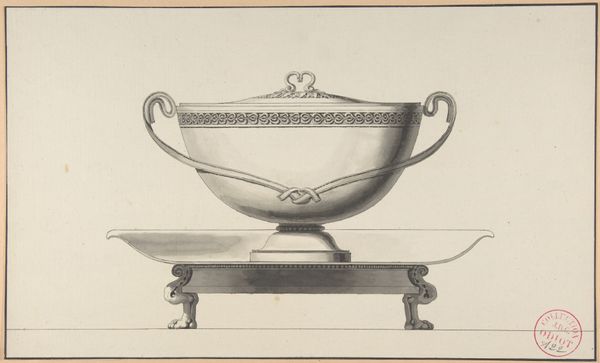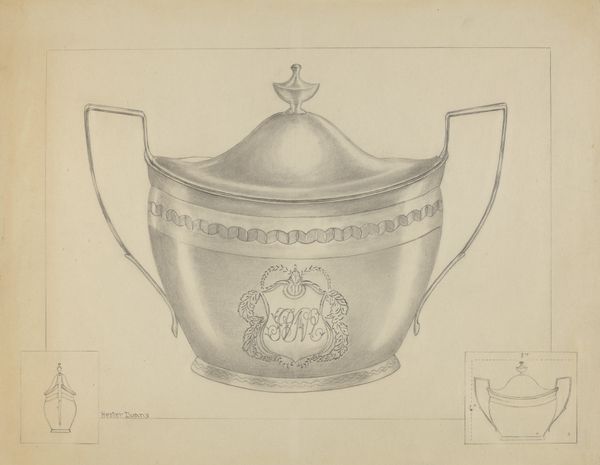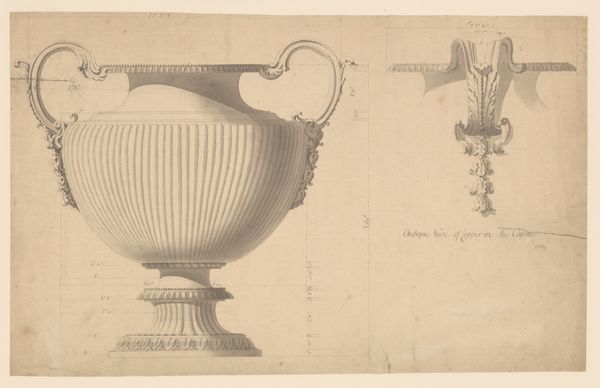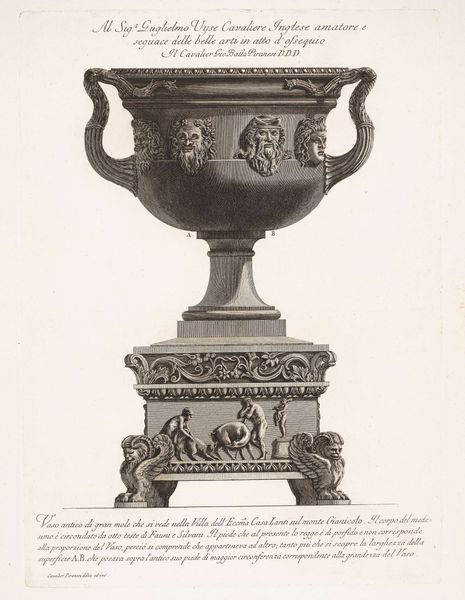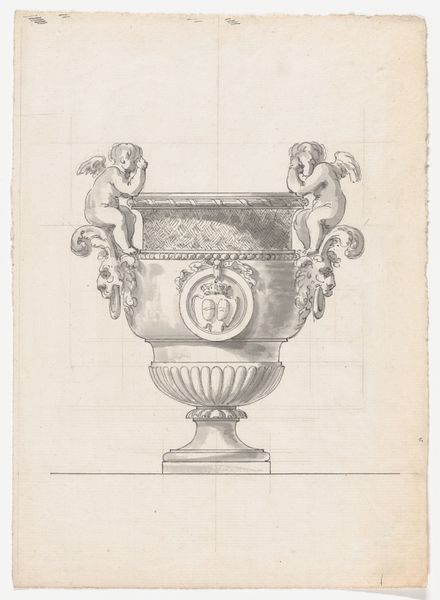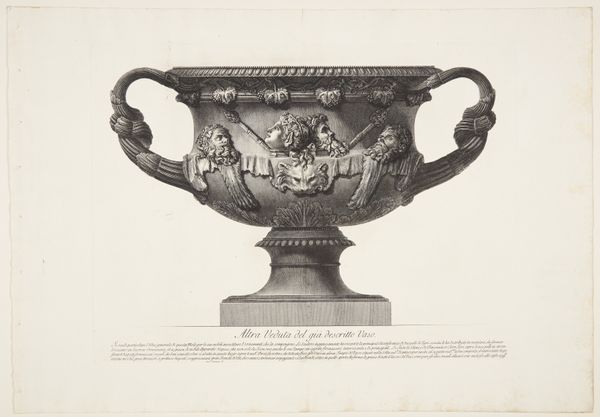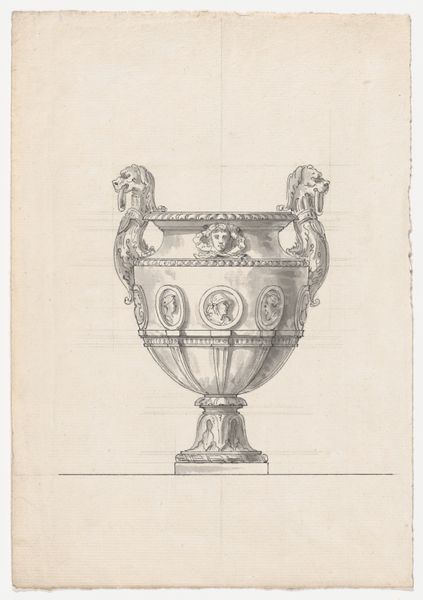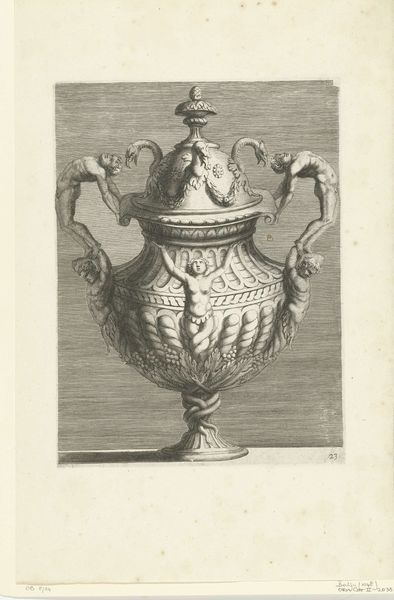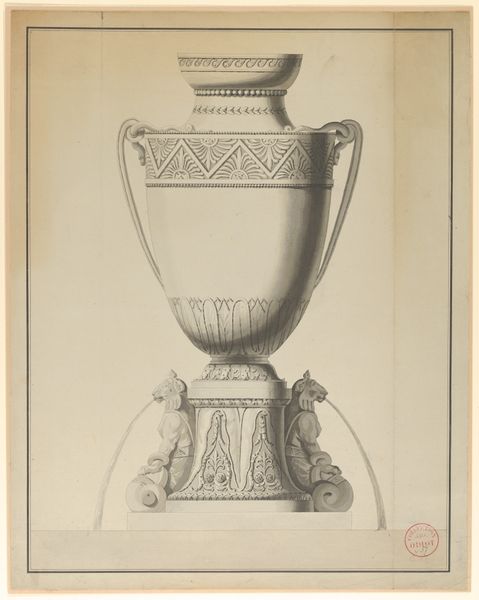
Design for a Covered Tureen on a Footed Stand 1770 - 1816
0:00
0:00
drawing, paper, pencil
#
drawing
#
neoclacissism
#
paper
#
pencil
#
decorative-art
Dimensions: 17 13/16 x 23 1/16 in. (45.2 x 58.5 cm)
Copyright: Public Domain
Editor: This pencil drawing, "Design for a Covered Tureen on a Footed Stand," was created by Henri Auguste sometime between 1770 and 1816. The draftsmanship is impressive, and I'm struck by the ambition of this design – it feels more like a monument than a piece of tableware. What stands out to you? Curator: What I notice is the clear embrace of Neoclassicism during a period of significant social upheaval. Consider the French Revolution, happening right in the middle of that date range. Isn't it interesting that while society was being radically restructured, artists and designers were looking back to the perceived order and grandeur of ancient Greece and Rome? Editor: That's a fascinating contrast. So, you see this design as a sort of…escapism, or perhaps a statement against the chaos? Curator: Not escapism, exactly. More a reimagining of authority. Neoclassicism wasn't just about pretty shapes; it was a visual language that evoked power, stability, and the rule of reason. This tureen, with its Greco-Roman motifs and formal symmetry, projects an image of cultivated taste and inherited power – values increasingly challenged at the time. Who, then, might the tureen have been for? Editor: So, beyond the aesthetics, it’s a declaration? That gives me a lot to think about regarding the role of decorative arts within larger historical movements. Curator: Precisely. Even something as seemingly mundane as a tureen design can tell us volumes about the complex relationship between art, power, and social change.
Comments
No comments
Be the first to comment and join the conversation on the ultimate creative platform.
